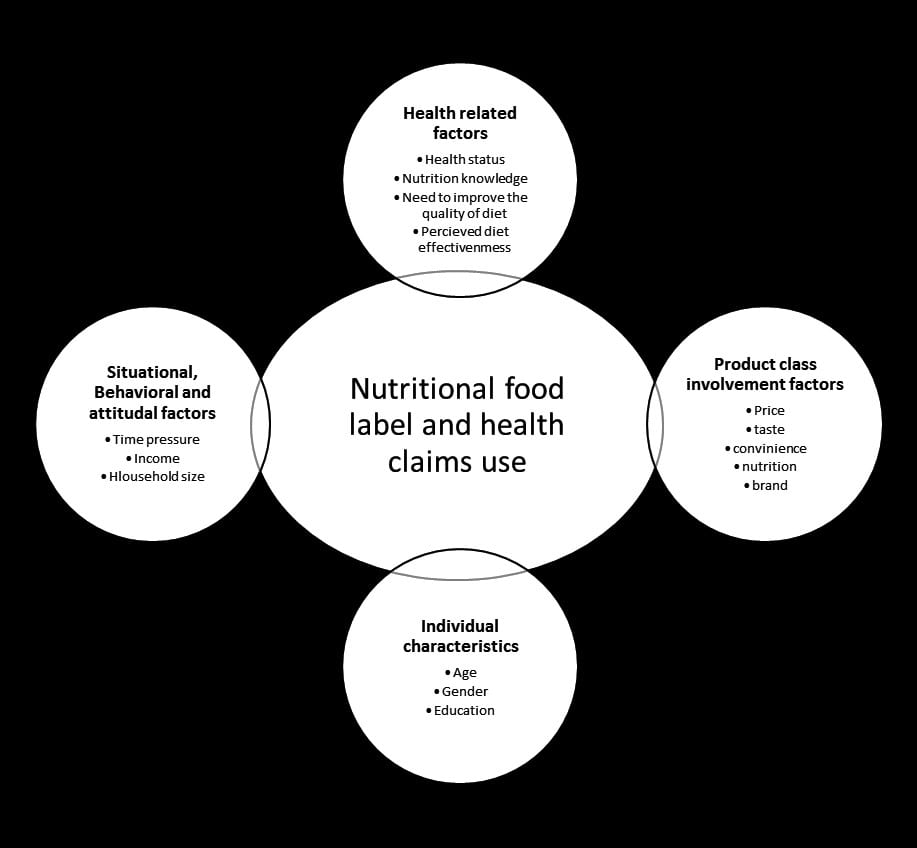The National Centre for Food Manufacturing (NCFM) is currently working with a number small medium enterprises (SME’s) in the food industry supporting them to incorporate nutritional information in their menu items. Our work has assisted in nutritional calculation and provision of nutrition information including allergen information, Ingredient list, daily intake values and the ‘traffic light.’ Nutrition Facts Information (NFI). Such insight into menus and food offers can improve business outlook and stimulate innovations, examples of these are reported here.
Eating a balanced diet is vital for good health and well-being. Food provides the necessary energy, protein, essential fats, vitamins and minerals needed by the body to function well. When food is in abundance in terms of variety, quality and availability, it is the choice the consumer makes that determines the nutritional quality of their diets. What you eat maximises your health, reducing risk of disease including chronic diseases such as diabetes, hypertension, heart disease and cancer. The escalating incidences of overweight and obesity related health problems has established a global imperative for changing nutrition and dietary patterns (see reference). With this in mind, many food manufacturers, policy makers and stakeholders have made meeting nutritional values a very important consideration when advancing food product development protocols and as a consequence nutritional values are now a mandatory requirement on labels of all food products in the UK and Europe under EU Regulation No. 1169/2011.
Consumer product knowledge is paramount because this has impacted on food product choice. It has been suggested that people who read nutritional information on food labels are likely to attach a higher level of importance to nutrition and influence family preferences. New Product Development and reformulation of existing products has been heavily influenced by consumer trends that have veered towards lowering sugar, salt, carbohydrate and fat in food products. This has challenged the typical view of healthy food and prompted the food industry to quickly adapt and produce food items that are focused on health and nutrition promotion using ingredients that have low calorific values to meet consumer demand (See reference).
Menu development and recipe formulation has become a new frontier where nutritionals are influencing consumer choice. This has encouraged chefs and culinary experts to adapt and start using new cooking techniques and novel ingredients in order to stay relevant and also maintain a competitive edge in their food businesses. Calorie count has become a topical issue with governmental bodies, stakeholders and the food arena at large joining hands in ensuring that all food products offered in the market contain nutrition guidelines that help consumers make informed choices when purchasing food items. Additionally, there has been a link between nutrition information and health with governmental bodies encouraging consumers to maintain the daily recommended intake allowances for both children and adults.
The National Centre for Food Manufacturing (NCFM) is currently working with small medium enterprises (SME’s) in the food industry in trying to encourage them to incorporate nutritional information in their menu items. An appropriate software with a wide database has been developed to assist in nutritional calculation and provision of nutrition information including allergen information, Ingredient list, daily intake values and the ‘traffic light.’ Nutrition Facts Information (NFI) outputs include summaries of the calorie content, carbohydrates, fats, proteins, fibre and salt content of foods or dishes. This offers SME’s the ability to optimise and reformulate their recipes and menu items to meet the required levels in terms of fat (9 Kcal per gram), carbohydrates (4 Kcal per gram) and Proteins 4 Kcal per gram) (See reference).
Since the mid twentieth century, concerns have been raised about dietary fat and cholesterol intake as one of the major stand points for changing consumer expectations and the responsibilities of food manufacturers. This is as the result of interaction of a multitude of social, economic and environmental variables compounded by increased serving sizes which are promoted at the expense of nutritionally balanced food choices. This brings into focus the relationship between the restrictive food labelling regulation and consumer protection whilst simultaneously raising awareness and improving knowledge about diet and health (See Reference).
Concerns by consumers about sustainability have impacted food manufacturers to take drastic efforts to address new consumer priorities at a larger scale than simply complying with regulation designed to protect the consumer. Meeting the daily nutritional reference intake has important sustainability outcomes as it improves health, however it has also posed challenges to the consumer which are being mitigated by the food industry through the supply of food products and services that meet consumer expectations (See reference). This has been influenced by the ever changing trends, attitude and behaviours of discerning consumers that has led to development of new technology for food production and information transfer to bridge gaps. In turn food choice has been influenced according to a framework for nutrition facts and nutrition claims use which has been developed and is summarised as below: (See Figure 1)

Figure 1: Conceptual Framework For Nutritional Facts Information And Nutrition Claim Use (Adapted from)
The food industry in the UK has been credited with responding efficiently and effectively to the diverse range of consumer demands across board by aligning the composition and promotion of many products to dietary and nutritional objectives. In retrospect it is important to develop science based recommendations of meal plans to consumers as this is an area gaining prominence at the moment as consumers are using this platform for weight loss purposes or other situational factors such as maintaining a balanced diet or to mitigate health issues. Nutritionals should be an enabler to consumer information, choice and product composition and should be easy to read, understand, easily visible, permanent and not misleading. The food industry as a whole can therefore focus on collaborative work with the research community, consumer groups, competitors, governmental bodies and industry stakeholders to come up with ways and means of applying new technologies with scientific know how about nutrition and labelling parameters. This will ultimately encourage future initiatives which would be consumer based and offer a varied choice of products that would suit the needs of each dietary and nutrition cluster.
